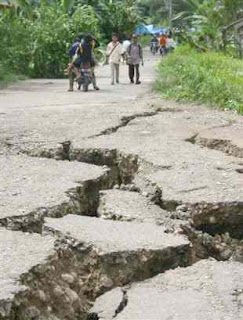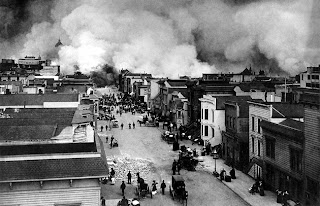
"Anatomy of an Earthquake." (Part 3)
Earthquakes can cause fires by damaging electrical power or gas lines. In the event of water mains rupturing and loss of pressure, it may also become difficult to stop the spread of a fire once it has started. For example, more deaths in the 1906 San Francisco earthquake were caused by fire than by the earthquake itself.
Tsunamis are long-wavelength, long-period sea waves produced by the sudden or abrupt movement of large volumes of water. In the open ocean the distance between wave crests can surpass 100 kilometers (62 miles), and the wave periods can vary from five minutes to one hour. Such tsunamis travel 600-800 kilometers per hour (373-497 miles per hour), depending on water depth. Large waves produced by an earthquake or a submarine landslide can overrun nearby coastal areas in a matter of minutes. Tsunamis can also travel thousands of kilometers across open ocean and wreak destruction on far shores hours after the earthquake that generates them.
A flood is an overflow of any amount of water that reaches land. Flood occur usually when the volume of water within a body of water, such as river or lake, exceeds the total capacity of the formation of the body. However, floods may be secondary effects of earthquakes, if dams are damaged. Earthquakes may cause landslips to dam rivers, which then collapse and cause flood.
Earthquakes may lead to disease, lack of basic necessities, loss of life, higher insurance premiums, general property damage, road and bridge damage, and collapse or destabilization (potentially leading to future collapse) of buildings.
Earthquakes can also precede volcanic eruptions. The largest earthquake that has been measured was the 9.5 magnitude one in Chile in 1960.
I hope you have enjoyed reading these kind of interesting topics.
God bless and keep you safe!!
STARRY DAWN.









.jpg)





